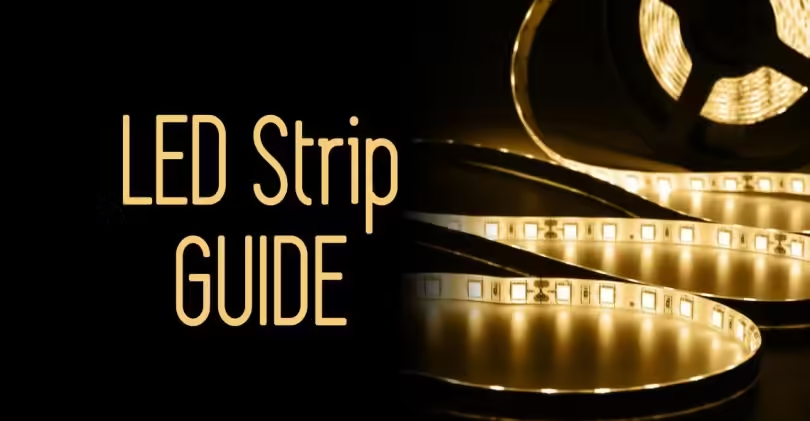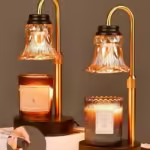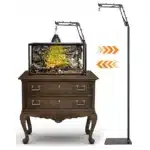What is the Difference between Incandescent And LED Lights, Incandescent lights use a filament that glows when heated by electricity. LED lights use semiconductors to emit light efficiently.
Incandescent and LED lights are popular lighting options, but they differ significantly in their technology and efficiency. Incandescent bulbs produce light by heating a filament until it glows, which results in high energy consumption and a shorter lifespan. LED lights, on the other hand, utilize light-emitting diodes to generate illumination.
This method is much more energy-efficient and has a longer operational life. LED lights also produce less heat, making them safer and more environmentally friendly. These differences have made LED lights the preferred choice for modern lighting solutions, offering better performance and cost savings over time.

Credit: www.christmas-light-source.com
Incandescent Lights
Incandescent lights have been a staple in households for over a century. Known for their warm glow, they have a unique way of illuminating spaces. Below, we dive into the specifics of incandescent lights, explaining how they work and their common uses.
How They Work
Incandescent lights work by heating a filament inside a glass bulb. When electricity passes through the filament, it heats up and glows. The filament is usually made of tungsten. This material can withstand high temperatures without melting. The bulb itself is filled with an inert gas, such as argon, to prevent the filament from burning out quickly.
Here is a simple breakdown of the process:
- Electricity flows through the filament.
- The filament heats up due to electrical resistance.
- The heated filament emits visible light.
- The glass bulb encloses the filament to protect it.
Common Uses
Incandescent lights are versatile and used in many settings. They are often found in homes, providing warm and inviting light. They are also used in decorative fixtures like chandeliers and holiday lights.
Here are some common uses of incandescent lights:
- Table lamps
- Ceiling fixtures
- Wall sconces
- Floor lamps
- Outdoor string lights
Incandescent lights are also popular in theater and photography. Their warm light mimics natural sunlight, creating a cozy atmosphere.
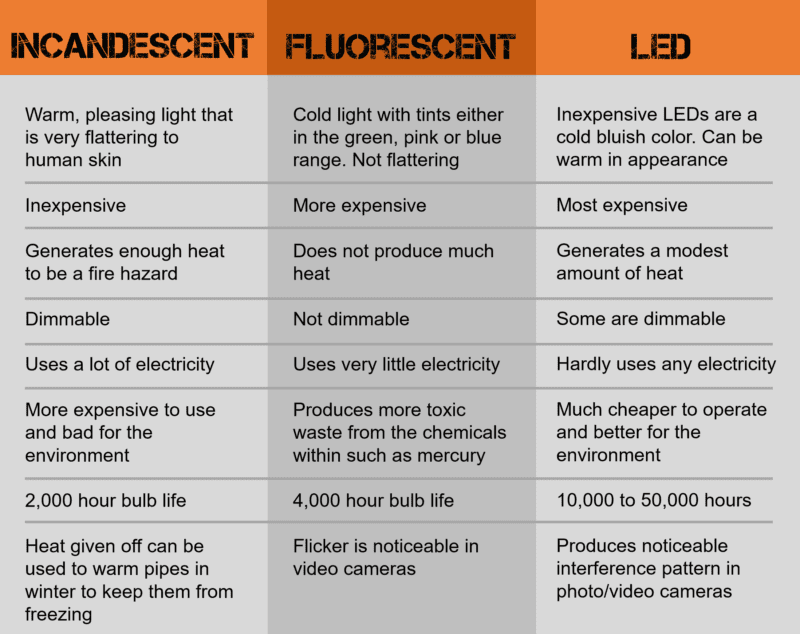
Credit: www.protoolreviews.com
Led Lights
LED lights have transformed the lighting industry. They offer energy efficiency, longevity, and versatility. These lights are now a popular choice in homes, offices, and public spaces.
How They Work
LED lights use a semiconductor to emit light. When an electric current passes through, the semiconductor emits photons. This process is known as electroluminescence.
LEDs don’t have a filament. They don’t rely on heat to produce light. This makes them much more efficient than incandescent bulbs.
Common Uses
LED lights are used in various applications. Here are some common uses:
- Home Lighting: LED bulbs can be used in lamps, ceiling fixtures, and more.
- Office Lighting: They provide bright, energy-efficient lighting for workspaces.
- Street Lighting: Many cities have switched to LED streetlights for better illumination and energy savings.
- Automotive Lights: LED headlights and taillights are standard in many modern vehicles.
- Decorative Lighting: LED strips and fairy lights are popular for decoration.
Energy Efficiency
Energy efficiency is a key factor when choosing between incandescent and LED lights. The right choice can save money and help the environment. Let’s explore the differences between these two types of lights under the subheadings of Power Consumption and Lifespan Comparison.
Power Consumption
Incandescent lights are known for their high power consumption. They convert only about 10% of the energy into light. The rest becomes heat. This makes them less efficient.
On the other hand, LED lights are highly energy-efficient. They convert almost 90% of the energy into light. Only a small fraction is wasted as heat. This efficiency translates into lower electricity bills.
| Type of Light | Energy Used (Watts) | Light Output (Lumens) |
|---|---|---|
| Incandescent | 60W | 800 lumens |
| LED | 10W | 800 lumens |
Lifespan Comparison
Incandescent bulbs have a short lifespan. They typically last around 1,000 hours. This means frequent replacements and higher costs over time.
LED lights have a much longer lifespan. They can last up to 25,000 hours. This reduces the need for frequent replacements. It also saves money in the long run.
- Incandescent Bulbs: ~1,000 hours
- LED Lights: ~25,000 hours
The longer lifespan of LEDs also means less waste. This makes them a more sustainable choice.
Environmental Impact
Understanding the environmental impact of incandescent and LED lights is crucial. These two types of lights affect the planet in different ways. This section will explore their carbon footprint and recyclability.
Carbon Footprint
Incandescent lights consume more energy. They convert only 10% of energy to light. The rest becomes heat. This high energy use means a higher carbon footprint. Power plants must burn more fossil fuels. This releases more greenhouse gases into the air.
LED lights are much more energy-efficient. They use 75% less energy than incandescent bulbs. Less energy means a smaller carbon footprint. Power plants burn fewer fossil fuels. This results in fewer greenhouse gas emissions.
Recyclability
Incandescent bulbs are not very recyclable. They contain glass and metal parts. Separating these materials is difficult. Most end up in landfills. This contributes to waste and pollution.
LED lights are more recyclable. They contain valuable materials like metals and semiconductors. Specialized recycling centers can separate these components. This reduces waste and environmental impact.
Here’s a comparison table for better understanding:
| Feature | Incandescent Lights | LED Lights |
|---|---|---|
| Energy Efficiency | Low | High |
| Carbon Footprint | High | Low |
| Recyclability | Poor | Good |
Cost Analysis
Understanding the cost differences between incandescent and LED lights is crucial. This section breaks down the initial costs and long-term savings of each option.
Initial Costs
Incandescent bulbs are generally cheaper to buy. A single bulb can cost around $1.
LED bulbs have a higher upfront cost. Expect to pay between $5 and $10 per bulb.
| Bulb Type | Average Cost per Bulb |
|---|---|
| Incandescent | $1 |
| LED | $5 – $10 |
Long-term Savings
LED bulbs save money over time. They use less energy and last longer.
Incandescent bulbs consume more power. They also need frequent replacements.
- LED bulbs: Up to 25,000 hours of use
- Incandescent bulbs: Around 1,200 hours of use
With LEDs, you save on electricity bills. They require fewer replacements, reducing long-term costs.
| Bulb Type | Lifespan (Hours) | Energy Consumption (Watts) |
|---|---|---|
| Incandescent | 1,200 | 60 |
| LED | 25,000 | 10 |
Switching to LEDs can lead to significant savings. They are an investment that pays off over time.
Light Quality
Understanding the light quality of different types of bulbs can help you make the best choice for your home or office. This section delves into the light quality of incandescent and LED lights. We will explore their brightness and color temperature to help you decide which is best for your needs.
Brightness
Incandescent lights typically have a warm and soft glow. They emit light in all directions, making them ideal for general lighting. However, they consume more energy to produce the same brightness as LEDs.
LED lights are highly efficient and produce more light per watt. They often come with adjustable brightness levels, allowing for more control. LEDs can be just as bright or even brighter than incandescent bulbs.
Color Temperature
The color temperature of a light source is measured in Kelvin (K). This determines whether the light appears warm or cool.
- Incandescent lights: Usually have a color temperature of 2700K to 3000K. This creates a warm, yellowish light, ideal for cozy settings.
- LED lights: Offer a wide range of color temperatures, from 2700K to 6500K. This allows for a more versatile lighting setup. You can choose warm light for relaxation or cool light for workspaces.
| Light Type | Brightness | Color Temperature |
|---|---|---|
| Incandescent | Soft, warm glow | 2700K to 3000K |
| LED | Adjustable, highly efficient | 2700K to 6500K |
Durability
Durability is one of the key factors to consider when choosing between incandescent and LED lights. Both types of lighting have unique characteristics that affect their longevity and performance under different conditions. Let’s explore these aspects in detail.
Shock Resistance
Incandescent bulbs are more fragile. They have a delicate filament inside. This filament can break easily if the bulb is shaken or dropped. Hence, they are not suitable for environments where vibrations or impacts are frequent.
LED lights are much sturdier. They do not have a filament. Instead, they use solid-state components that are less prone to damage. This makes LEDs highly resistant to shocks and vibrations.
Weather Resistance
Incandescent bulbs can be affected by extreme temperatures and moisture. These conditions may cause the bulb to fail prematurely. They are not ideal for outdoor use or harsh weather conditions.
LED lights are designed to withstand various environmental factors. Many LEDs are waterproof and can operate in cold and hot climates. This makes them perfect for outdoor applications and extreme weather conditions.
Safety Considerations
When choosing between incandescent and LED lights, safety is crucial. Different lights have unique safety considerations. This section explores the key safety aspects of both types.
Heat Emission
Heat emission is a significant safety concern for lights. Incandescent bulbs generate a lot of heat. They can become very hot to the touch. This can cause burns or even start a fire.
LED lights, on the other hand, emit very little heat. They stay cool even after hours of use. This makes them safer to handle and reduces fire risk.
Toxic Materials
Toxic materials present another safety consideration. Incandescent bulbs do not contain hazardous chemicals. They are generally safe in this regard.
LED lights contain small amounts of hazardous substances like lead and arsenic. Though minimal, these substances can be harmful if the bulb breaks.
| Safety Aspect | Incandescent Bulbs | LED Lights |
|---|---|---|
| Heat Emission | High | Low |
| Toxic Materials | None | Minimal |
- Incandescent bulbs: Higher heat, no toxic materials.
- LED lights: Lower heat, minimal toxic materials.
Installation And Compatibility
Understanding the installation and compatibility of incandescent and LED lights is crucial for making an informed decision. Both lighting types have specific requirements and options. Here, we explore their fitting types and retrofit options to help you choose wisely.
Fitting Types
Both incandescent and LED lights come in a variety of fitting types. The most common fittings include:
- Edison Screw (E27)
- Bayonet Cap (B22)
- Small Edison Screw (E14)
- GU10
Incandescent bulbs typically use the standard E27 and B22 fittings. On the other hand, LED bulbs are available in multiple fittings, ensuring compatibility with most fixtures.
| Fitting Type | Common Usage |
|---|---|
| E27 | Ceiling and table lamps |
| B22 | Ceiling fixtures |
| E14 | Small lamps |
| GU10 | Spotlights |
Retrofit Options
Switching from incandescent to LED lights is straightforward with retrofit options. LED bulbs are designed to fit existing fixtures, making the transition easy.
- Turn off the power.
- Remove the incandescent bulb.
- Screw in the LED bulb.
- Turn the power back on.
No need for special tools or expertise. The plug-and-play nature of LED bulbs simplifies the process.
Retrofit kits are also available for specialized fittings. These kits include all the necessary components for a seamless switch.
Replacing older bulbs with LEDs enhances energy efficiency and longevity, ensuring a quick return on investment.
Technological Advancements
Lighting technology has come a long way. Incandescent and LED lights show this progress. Incandescent bulbs are older. LED lights are more modern. They bring new features and benefits.
Smart Lighting
Smart lighting is a major advancement. LED lights can connect to Wi-Fi. This allows control with a smartphone. You can turn lights on or off remotely. You can also change the color and brightness. Smart lighting can be automated. For example, lights can turn on at sunset. Incandescent bulbs cannot do this.
Dimming Capabilities
Both incandescent and LED lights can dim. LED lights offer more options. They can dim to very low levels. Incandescent bulbs may flicker at low settings. LEDs provide smooth dimming. They also use less energy when dimmed. This saves money on electricity. Incandescent bulbs do not save as much energy when dimmed.
| Feature | Incandescent Bulbs | LED Lights |
|---|---|---|
| Smart Lighting | No | Yes |
| Dimming Capabilities | Limited | Advanced |
Aesthetic And Design
Understanding the aesthetic and design differences between incandescent and LED lights helps you choose the right lighting. Each type has unique styles and options that fit different spaces and moods.
Variety Of Designs
Incandescent bulbs have a classic look. They come in standard shapes and sizes. Their warm glow suits traditional settings.
LED lights offer a wider variety of designs. They come in many shapes, sizes, and colors. They fit modern and creative spaces.
| Aspect | Incandescent | LED |
|---|---|---|
| Shapes | Limited (A, B, C) | Unlimited (A, B, C, G, PAR, etc.) |
| Colors | Warm White | Multiple colors and temperatures |
| Styles | Traditional | Modern, Vintage, Artistic |
Customization Options
Incandescent lights offer limited customization. You can dim them, but that’s about it.
LED lights provide many customization options. They can change colors, brightness, and even patterns.
- Color-changing: LEDs can display multiple colors.
- Dimming: LEDs offer better dimming control.
- Smart Control: Many LEDs connect to smart home systems.
With LEDs, you can set the perfect mood for any occasion. They are ideal for creative projects and modern homes.
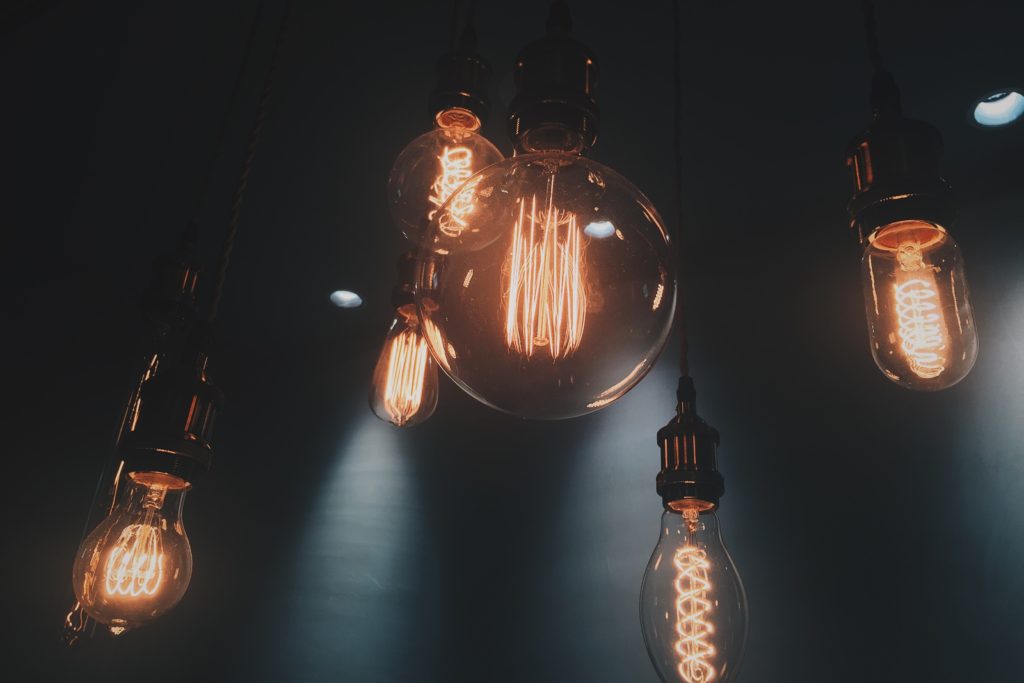
Credit: www.light-bulbs-unlimited.net
Common Myths
Many people are unsure about the differences between incandescent and LED lights. Myths often confuse consumers. Here, we debunk common myths surrounding both types of lights.
Myths About Incandescents
There are several myths surrounding incandescent lights. Let’s clarify these misunderstandings.
- Myth 1: Incandescents Last Long – Incandescent bulbs burn out quickly. Their lifespan is shorter than LEDs.
- Myth 2: Incandescents Are Energy Efficient – These bulbs use more energy. They convert most energy into heat.
- Myth 3: Incandescents Provide Better Light Quality – The light quality is warm but not always better. LEDs now offer similar warmth.
Myths About Leds
LED lights also have myths that need clarification. Here are the common misconceptions.
- Myth 1: LEDs Are Expensive – The initial cost is higher. But they save money over time.
- Myth 2: LEDs Are Not Bright – LEDs can be very bright. They come in various brightness levels.
- Myth 3: LEDs Have Poor Light Quality – LED technology has improved. They now offer excellent light quality.
Understanding these myths helps in making informed choices about lighting options.
Consumer Reviews
Understanding consumer reviews can help make informed choices between incandescent and LED lights. Users often share valuable insights based on their experiences. These reviews highlight various aspects like brightness, energy efficiency, and lifespan.
User Experiences
Incandescent lights have been around for over a century. Many users appreciate their warm and familiar glow. They are often used in settings where ambiance is important.
LED lights, on the other hand, are praised for their energy efficiency. Users note that LEDs save a lot on energy bills. They also last much longer compared to incandescent bulbs. Here are some common points from user reviews:
- Brightness: LEDs are often brighter than incandescent lights.
- Energy Consumption: LEDs use significantly less energy.
- Heat Emission: Incandescent bulbs get hot, LEDs stay cool.
- Durability: LEDs are more durable and less prone to breakage.
Expert Opinions
Experts in lighting technology provide deeper insights into both types of lights. They often highlight the scientific and economic aspects.
| Aspect | Incandescent Lights | LED Lights |
|---|---|---|
| Energy Efficiency | Low | High |
| Lifespan | 1,000 hours | 25,000 hours |
| Cost | Cheaper upfront | Costlier upfront, cheaper long-term |
| Environmental Impact | Higher carbon footprint | Lower carbon footprint |
Experts agree that LED lights are better for the environment. They use less energy and last longer. Incandescent lights are not as energy-efficient and have a shorter lifespan. This makes LEDs a preferred choice for long-term savings and sustainability.
Frequently Asked Questions
What Is Better, Incandescent Or Led Lights?
LED lights are better. They use less energy, last longer, and are more environmentally friendly than incandescent bulbs.
Is Led Or Incandescent Better For Your Eyes?
LED lights are better for your eyes. They produce less heat, offer better energy efficiency, and reduce eye strain.
How To Tell If A Light Bulb Is Led Or Incandescent?
Check the bulb’s label for “LED” or “Incandescent. ” LED bulbs are cooler and often have a plastic base. Incandescents are hotter and have a glass base.
Can I Replace Incandescent String Light Bulbs With Led?
Yes, you can replace incandescent string light bulbs with LED bulbs. Ensure the LED bulbs are compatible with your string lights. LED bulbs are energy-efficient and last longer, making them a great choice for replacements. Check the wattage and base type to match the original bulbs.
What Are Incandescent Lights?
Incandescent lights use a filament that glows when electric current passes through it.
What Are Led Lights?
LED lights use light-emitting diodes to produce light efficiently.
How Long Do Incandescent Bulbs Last?
Incandescent bulbs typically last about 1,000 hours.
How Long Do Led Bulbs Last?
LED bulbs can last up to 25,000 hours or more.
Are Led Lights More Energy-efficient?
Yes, LED lights use about 75% less energy than incandescent bulbs.
Do Incandescent Bulbs Emit More Heat?
Yes, incandescent bulbs emit more heat compared to LED lights.
Conclusion
Choosing between incandescent and LED lights depends on your needs. LED lights offer energy efficiency and longevity. Incandescents provide a warmer glow but consume more power. Evaluate your priorities to make the best choice. For most, LEDs are a better investment.
Make the switch to save energy and reduce costs.

